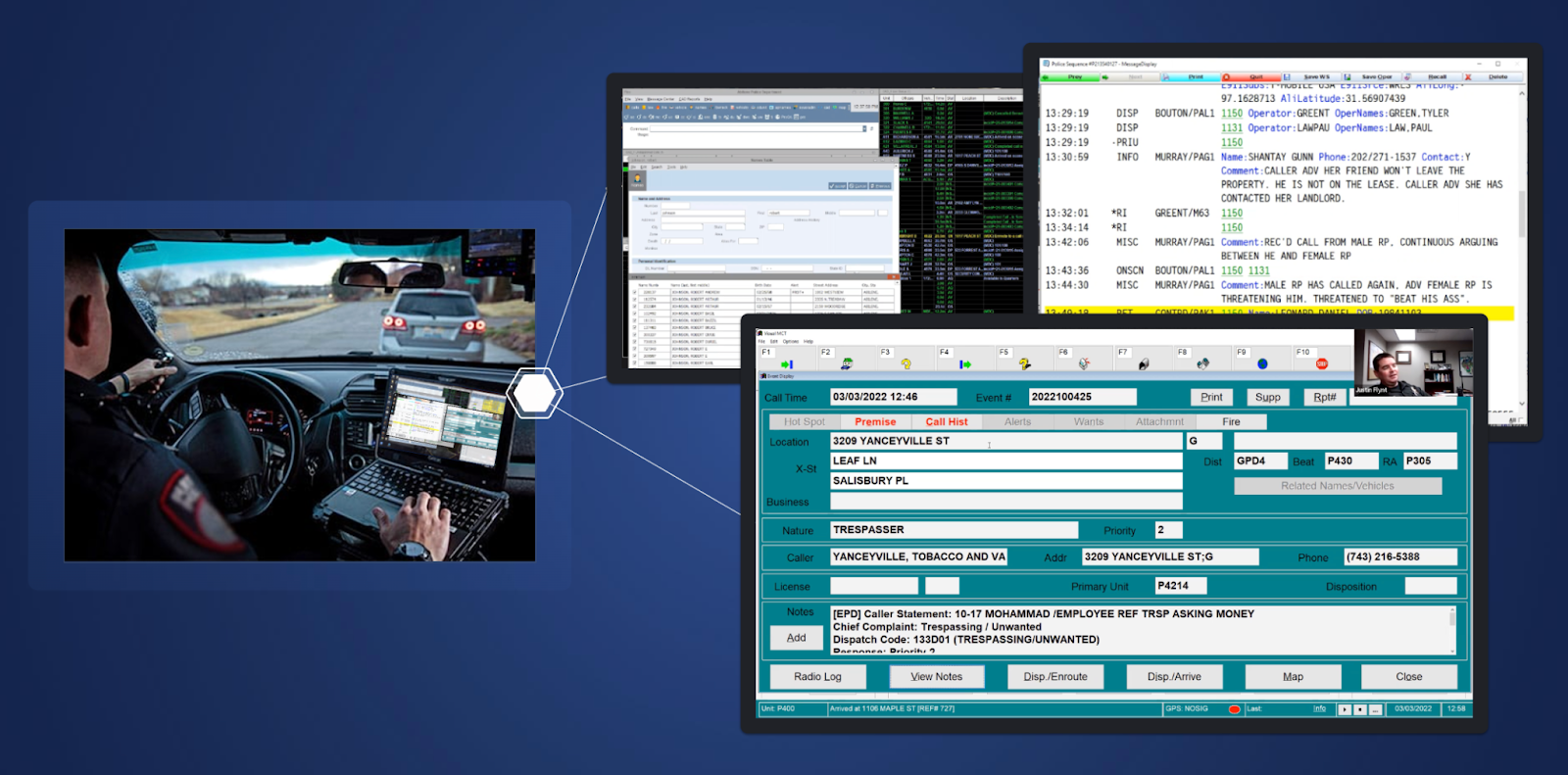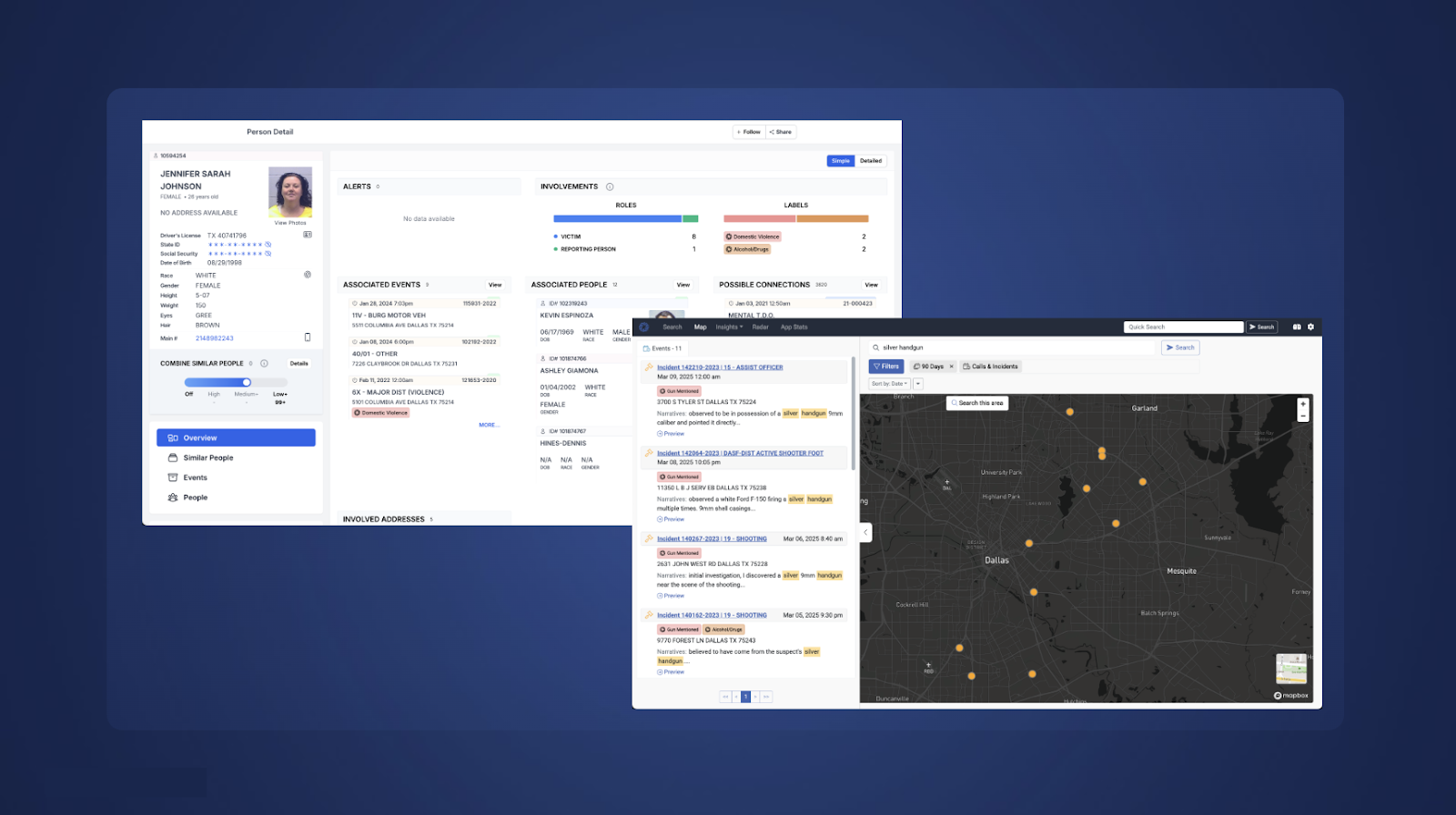%20(11).png)
Every day, law enforcement officers lose precious minutes and sometimes critical insights wrestling with data that should be at their fingertips. While you're focused on keeping communities safe, outdated systems force your team into time-consuming workarounds that pull focus from what matters most.

At ForceMetrics, our team includes former law enforcement professionals who work closely with agencies nationwide. We've identified seven clear signals that show when an agency is ready to make the leap to real-time data access.
If these scenarios sound familiar, your department might be more ready for change than you realize.
When your officers start creating their own tracking systems (screenshots saved to phones, addresses scribbled on coffee-stained napkins, suspect descriptions texted to themselves), that's your data infrastructure sending up a flare.
Officers shouldn't have to become digital pack rats just to remember which vehicle was spotted at three different scenes. When information takes too long to retrieve, your team naturally builds workarounds. But these personal systems create gaps that can compromise investigations and officer safety.
Lt. RB Todd of Greensboro PD puts it perfectly: "Before ForceMetrics, I'd grab screenshots or scribble notes in my patrol car—anything to remember who's who or which address was linked to a suspect."
Real-time access puts those crucial details where they belong: instantly available when officers need them most.
If your analysts or supervisors are still manually pulling data from RMS, CAD, and Excel spreadsheets to prep for briefings, you're burning hours on work that technology should handle automatically. Worse yet, by the time those carefully crafted reports reach command staff, they're already telling yesterday's story.
Real-time platforms flip this equation. Instead of spending valuable time assembling data, your leadership can focus on asking the right questions and getting immediate answers. No more waiting for next week's report to understand what happened last week.
Every duplicate entry doubles your workload and multiplies your risk. When the same incident details have to be manually entered into CAD, then RMS, then your crime analysis spreadsheet, you're creating opportunities for inconsistencies that can affect investigations and resource deployment.
If you're tired of this data juggling act, you're not alone. Departments are discovering that when systems actually talk to each other, officers can focus on policing instead of paperwork.
Picture this: It's Monday morning, and you're updating yesterday's incidents with a whiteboard marker while officers wait to hit the street. If this scene feels familiar, you're not alone–but you shouldn't be stuck there.
When briefing materials are built manually or printed in advance, they're outdated before officers even see them. Your team deserves intel that reflects what's happening right now, not what was happening when someone hit "print" last Friday.
Lt. RB Todd, a ForceMetrics user with Greensboro PD, recently shared with us:
"In the old days, we printed static slides for Monday morning briefings. By the time we presented, half the data was stale. Now I just pull a live ForceMetrics dashboard and everyone sees exactly what's happening right now."
Here's the ultimate test: Are officers actually using the tools you've invested in? If your team is skipping over expensive software in favor of experience and intuition, those tools aren't delivering value when and where it's needed.
The problem isn't that officers don't like technology. The problem is when technology fights against how they actually do their jobs. When data tools match the way officers think and work, they get used. When they don't, they get ignored.
Retrospective analysis has its place, but what if you could spot those patterns while there was still time to do something about them? Agencies ready for real-time access are tired of playing catch-up with crime trends and ready to get ahead of them.
Travis Swain of Winston-Salem PD captures this shift perfectly:
"We used to rely on a crime analyst to stitch together pattern data weeks later. Now I run a quick 'possible connections' search in ForceMetrics and see recurring names or vehicles in seconds."
The difference between reactive and proactive policing often comes down to timing, and real-time data makes all the difference.
Grant funding increasingly depends on your ability to demonstrate measurable outcomes with solid data. If pulling that evidence means digging through case files, hunting through spreadsheets, or calling in favors from other departments, you're fighting an uphill battle against the calendar.
Modern platforms make it easier to track progress continuously and prove impact convincingly, all before the deadline pressure builds. When your data lives in real-time systems, grant applications become documentation exercises rather than archaeological digs.
These seven signs often show up together because they are all symptoms of the same core challenge: data systems that were not built for the pace of modern policing. Officers need information that moves fast and connects seamlessly.

ForceMetrics bridges that gap. With real-time dashboards and integrated search across CAD, RMS, and jail data, we eliminate the manual work that slows teams down, giving departments the tools to act quickly and lead with full context. By unlocking access to the information your agency already collects, we help officers act faster, spot trends sooner, and make smarter decisions in the moment.
The transformation from "we'll analyze that next week" to "let's see what's happening right now" isn't just about better technology. It's about better policing.
Ready to see how real-time data access could work for your department? Contact us to learn more about ForceMetrics and see a demo tailored to your agency's needs.